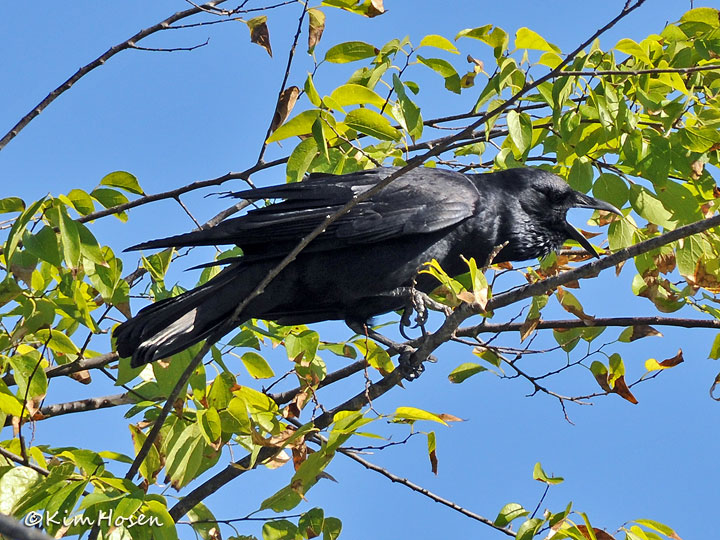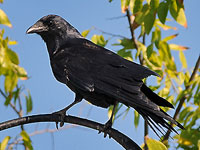
 |
Photos Kim Hosen; St. Simon's Island, Georgia; October 2010 Text by Kylie Bean |
American Crow Crows look similar in both their juvenile and adult lives. They are large and all black, including the legs, talons, and beaks. They are straight-billed, with broad wings, a thick neck, and a short, squared tail. Crows eat a variety of different foods, including worms, insects, seeds, fruit, roadkill, small animals, fish, and chicks from other birds' nests, mostly carrion chicks. They are found in most of the continental United States, and the majority of Canada as well. They can be found in a variety of different habitats, anywhere from secluded beaches to crowded cities. Crows live in Northern Virgina year-round, and can be commonly found in treetops, fields, and roadsides. They roost in trees, but mainly get food from the ground floor. One interesting fact about the American crow is that, although they are known for eating roadkill, they are not in fact anatomically designed to be scavengers. Another interesting fact about crows is that they can actually use rudimentary tools to find food, such as using sticks or hollowed-out nut shells to dig for food. Something else that is unusual about the American crow is that, in the winter, they roost in large communal nests of up to over 2 million crows. They also have the unusual behavior of not breeding until at least two years of age. One unfortunate problem about the American crow is that it is extremely susceptible to the West Nile virus, which has sent the local crow population plummeting in some areas. Although they have long been considered an omen of death, crows are also considered a sign of good luck in some Native-American tribes. |





